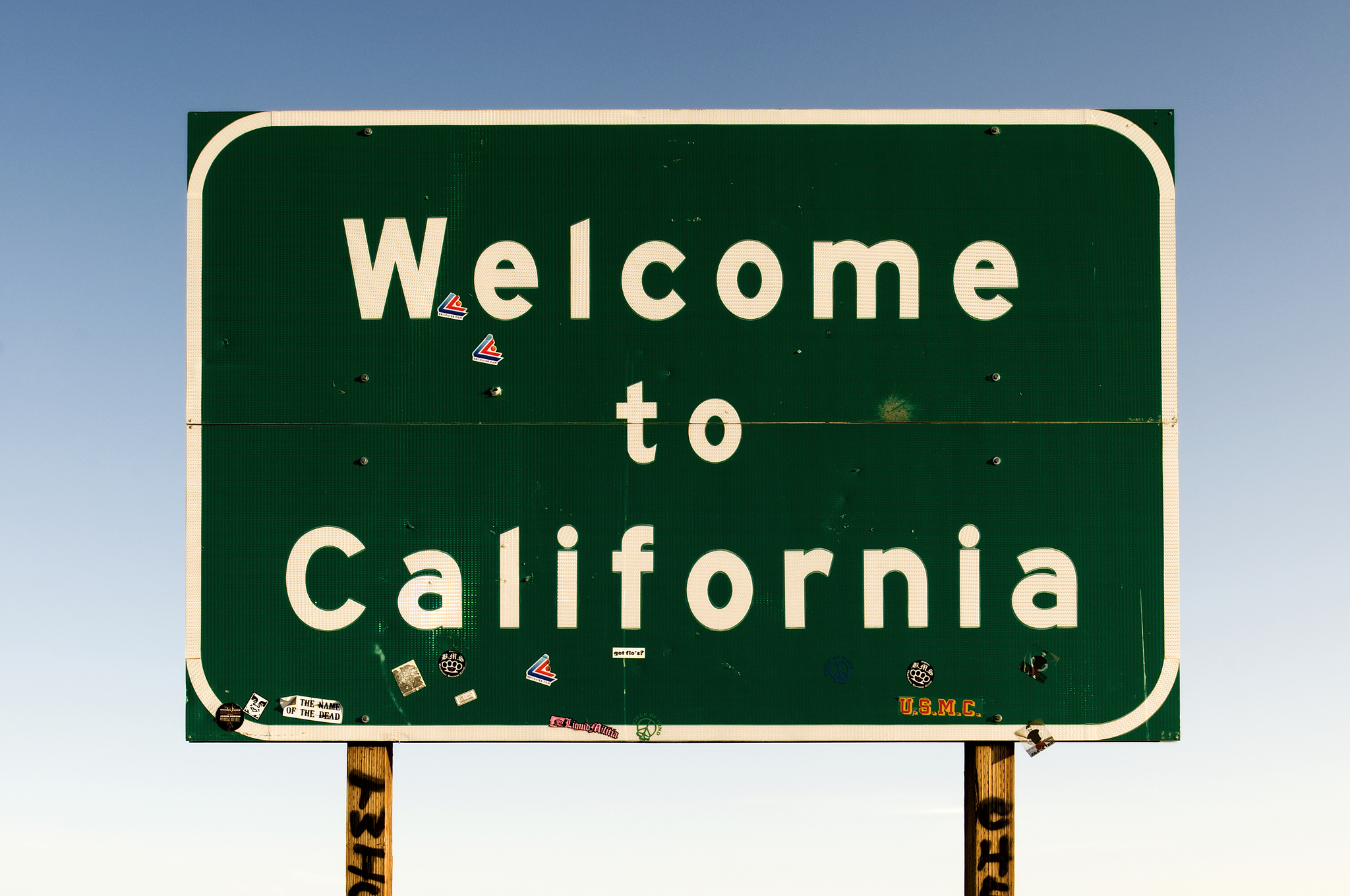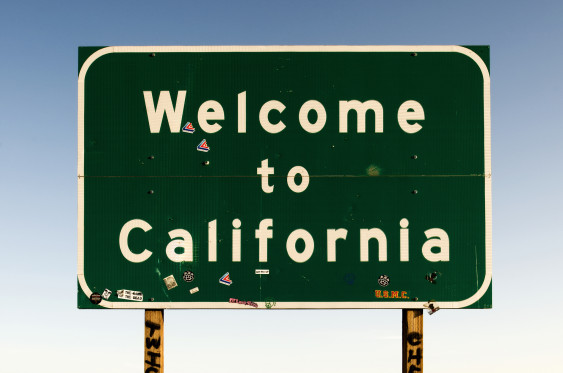Editor’s note: Washington’s Carbon Emissions Reduction Taskforce is weighing alternative carbon-pricing proposals. Recently, Yoram Bauman presented the case for Washington to adopt a BC-style carbon tax swap. Now, Alan Durning and Kristin Eberhard share the argument for Washington to join California’s cap-and-trade club.
The good news is that Washington State may be getting serious about a price on carbon. The other good news is that Washington does not have to start from scratch; it can adopt California’s off-the-rack state cap-and-trade system. It can even improve it. This approach not only lets Washington take advantage of the years of work California put into designing its system but may also help drive down carbon costs, minimize some of the cross-border problems of state-by-state regulation, and create regional momentum. Below, we describe the benefits of joining California, and recommend the ways Washington could improve on California’s excellent system.
Enjoy the Benefits of Joining
Good design
California spent a lot of effort studying the European and Northeast cap-and-trade programs and building a stronger program. It has a strict cap, comprehensive scope, upstream regulation, and anti-gaming protections. It auctions most allowances and limits offsets. By the time Washington goes through its own public process, California’s program will have been operating at full scale for several years, so Washington would be joining a fully functioning and mature program. By that time, carbon polluters in the Evergreen State will have a lot of information about the past and projected carbon price, and they will be able to make wise investments from the outset.
Minimize costs
A larger market can drive down costs. The market will seek out the lowest-cost ways to cut pollution in both states, resulting in a lower overall carbon price than either state would get on its own.
Reduce cross-border issues
One of the hardest things about taking state action on global climate change is figuring out how to address pollution spewed outside the state because of demand from people inside the state. Electricity is one tricky example of this. Power lines don’t stop at state borders. Washington exports electricity to California and Canada, but it also imports coal power from Montana and Wyoming. Governor Inslee is committed to stopping “coal-by-wire” from coming into Washington, and California’s cap-and-trade program is one of the only carbon pricing systems that addresses imported power. By joining together, Washington and California can untangle a few strands of the electricity web. If all western states join the program, there will be no need to extricate particular power plants or lines because all the power plants and all the customers will be inside the program.
Build momentum
Plus, Washington could start a trend. Joining California’s cap-and-trade program could create momentum for other states to follow suit. It would be easier and less costly for companies operating across state borders (such as utilities serving customers in multiple states) to comply with a single program instead of deciphering multiple state regulations. Washington might even create a trend for other states to follow of using California-style cap-and-trade to comply with the Environmental Protection Agency (EPA)’s new coal rules.
Be Better than California
Extend through 2050
Although a California Executive Order sets an ambitious pollution reduction target through 2050, California’s cap is only certain through 2020. By the time Washington is up and running, 2020 will only be a few years away, so Washington will need to set a longer timeline. Washington’s cap can create a binding commitment to the state’s existing targets of reducing carbon 25 percent below 1990 levels by 2035 and 50 percent below 1990 levels by 2050.
Cover jet fuel
Washington is one of the top 10 states in consumption of jet fuel. Washington can add jet fuel to the list of sources of pollution it includes in its cap.
Limit offsets even more
Offsets allow polluters to purchase credits for verified pollution reductions outside the cap. California allows each polluter to use offset credits for 8 percent of its total emissions. For example, if a refinery has reduced its pollution as much as possible by implementing energy efficiency retrofits, but it still pollutes 100 tons of carbon dioxide equivalent (CO2e) (just a round number—a refinery would actually pollute more than 25,000 tons CO2e per year). The refinery can then buy 92 allowances from the auction and 8 offset credits from third parties. It might be able to get offset credits cheaper than allowances from, say, a methane digester that is capturing methane on a farm and turning it into electricity instead of letting it escape into the atmosphere. The advantages of this arrangement are that it lowers the costs for the refinery, and it creates a funding mechanism for the farm to build methane digesters. The risks are that the farmer was going to install the digester anyway so he got a windfall profit, or that the digester does not continue operating as planned so pollution is not slashed as expected.
California has been more thorough than other programs in reducing these risks. Offsets must be real, additional, quantifiable, permanent, verifiable, and enforceable (section 95802(14)). California experts and stakeholders spent years developing a few well-documented protocols for offsets. California has adopted just five offset protocols, and all projects must be in the United States. However, to ensure the program cuts pollution as intended, Washington could put two additional safeguards in place:
- Washington could limit the number of offset credits a polluter may use from California’s eight percent to four percent of its total emissions (closer to RGGI’s 3.3 percent).
- Only allow the existing domestic offset protocols. Do not allow any future international offsets that California may eventually accept.
Spend the Money Differently
California is somewhat constrained in its legal use of auction revenue, but happily, Washington does not face the same limitations. Washington’s guiding priorities for spending money should be:
- Help low-income families
- Build the systems and infrastructures that give northwesterners a true option to choose a low-carbon lifestyle
- Strengthen the program so it is not vulnerable to being reversed or weakened in the future
Accordingly, we recommend spending the money on the following:
- Dividends for all state residents. This will offset the costs of the carbon price and make it harder for future politicians to roll back the program because people will not want to give up their checks. This option is somewhat complicated to implement in Washington, because the state has no personal income tax through which to administer rebates. Furthermore, the state constitution does not permit distribution of state funds to individuals unless they are indigent. Still, the legislature could pass a refundable personal sales tax exemption, for which residents could complete a simple annual application. The state’s yet-to-be-funded Working Families Rebate is structured this way.
- Additional dividends for low-income families, through the Working Families Rebate. Low-income families can be hit the hardest by a carbon price, so they need more protection from its impacts.
- Invest in energy efficiency retrofits, especially for low-income families and small businesses. This is a double win: energy efficiency is the cheapest way to reduce pollution, and targeting low-income households and small businesses lends relief where it is needed most.
- Investment in low-carbon infrastructure, particularly better transportation options. Low-income households often have limited transportation options and so they have the least ability to change their lifestyle in response to a carbon price. They can’t just buy a Prius. Instead, we can increase public transit, bike, and pedestrian infrastructure, especially in low-income communities.
- In our ideal world, carbon revenue would all go to dividends and greening the energy economy, but we know that the Washington legislature confronts a gaping hole in the state’s education budget. Spending carbon revenue on schools is another reasonable choice, especially if it is to build and repair school facilities in ways that also improve their energy efficiency.
California has the program, and Washington can get with it.











Matt
Questions:
– “It auctions most allowances”. Did California’s program auction most allowances from the beginning? What percentage of allowances are auctioned now?
– Minimizing Costs: Is there any reason to think that GHG reduction costs would be significantly different in CA vs. WA? If so, what would the potential ramifications be: if cheaper in WA, would $ flow to from CA to WA, or if cheaper in CA, would more $ flow from WA to CA for compliance?
Thanks!
Kristin Eberhard
Matt,
– Right now California auctions about 55% of allowances: all investor owned utility (IOU) allowances, and about 10% of industrial allowances. Publicly owned utilities get allowances for free and about 90% of industry allowances are free to aid in the transition.
– In 2020, about 75% of CA allowances will be auctioned: all IOU, all transportation, and about 60% of industry.
Note that it is difficult to estimate industry allowances, because it is based on a formula for identifying which industries are at risk for competition from jurisdictions without a carbon price. See one estimate here.
Also note that IOU allowances are “consigned” meaning they are sold in the auction by the revenue goes back to the utilities with a requirement that they spend the money for certain customer benefits.
– WA’s overall cost of reductions will be largely determined by the stringency of its reduction target. For example, Quebec aims for more reductions, so its price is higher than CA. As a result, Quebec industries will benefit from a lower price by linking to CA, but CA will benefit from more auction revenue by linking to Quebec. If WA has a tighter target, WA businesses will benefit from a lower auction price by linking to CA compared to a WA-only program. IF WA has a lower price, then it will bring in more revenue from a joint auction than from a WA-only auction.
Kristin Eberhard
In general, bigger markets bring more liquidity and more competition, which drives down prices.
Matt
Thanks!
Hilde
There’s some mistake in the argument, the way I see it. A carbon cap-and-trade system cannot and should not lead to a lower price of carbon. The economies of scale would lead to a lower price for technologies that curb carbon emissions.
Kristin Eberhard
Hilde,
Yes, as economies of scale from a larger market drive down the price for technologies that curb carbon, it makes it cheaper to reduce emissions. A cap-and-trade system sets the cap at a certain goal for emissions reductions–say, reducing to down to 1990 levels by 2020. If it is cheaper to reduce emissions, then it will be cheaper to reduce down to that goal. That means the price of carbon in the cap-and-trade system will be lower than it would be if pollution cutting technologies had not gotten cheaper.